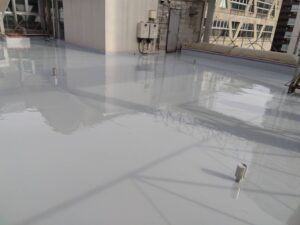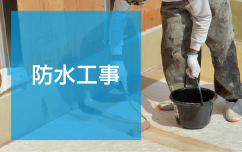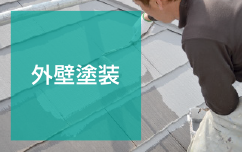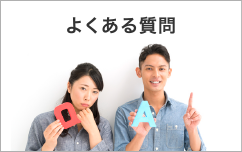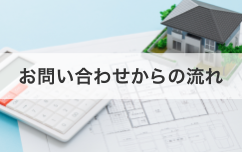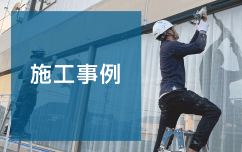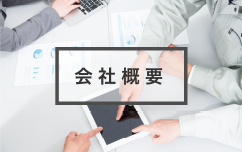
ブログ

ホーム | ブログ

English Version_Nagoya Waterproofing Construction: Professional Solutions for Long-Lasting Protection
Nagoya Waterproofing Construction: Professional Solutions for Long-Lasting Protection
Written by Tamura – Waterproofing Specialist at MASA Co., Ltd.
Waterproofing is one of the most overlooked yet essential components of building maintenance. Here in Nagoya City, drastic temperature changes, sudden heavy rains, and seasonal typhoons often cause buildings to deteriorate faster than expected. As a waterproofing engineer at MASA Co., Ltd., I have seen firsthand how early intervention and professional craftsmanship can prevent costly damage and extend the life of any structure.
In this article, I will explain the importance of waterproofing in Nagoya, common failure points, recommended waterproofing methods, and how our team at MASA approaches each project with precision and care.
Why Waterproofing is Essential in Nagoya City
Nagoya’s climate creates harsh conditions for building exteriors:
1. Frequent Heavy Rain and Sudden Downpours
Nagoya is known for unexpectedly intense rainfall, especially during the rainy season and typhoon periods. Even a small crack in a balcony or rooftop can allow water to penetrate deep into the structure.
2. Strong UV Exposure
Rooftops and balconies in Nagoya receive strong sunlight throughout the year. UV radiation accelerates the deterioration of waterproofing layers, causing cracks, peeling, and brittleness.
3. Temperature Fluctuations
Seasonal changes between hot summers and cold winters cause expansion and contraction of materials. This movement leads to micro-cracks—one of the main sources of water entry.
Without timely maintenance, these issues can develop into serious structural problems such as interior leaks, mold, corrosion of rebar, and even reduced earthquake resistance.
Common Places Where Water Leaks Occur
As a waterproofing specialist, I often inspect buildings in Nagoya and have found that most leaks originate from the following areas:
1. Rooftops (Flat Roofs and Metal Roofs)
Worn-out membranes, ponding water, and aged sealants often cause leaks.
2. Balconies and Verandas
Drainage clogging, cracks, and UV-damaged coatings are common trouble spots.
3. Exterior Walls
Seam failures, old caulking, and thermal movement create water-entry pathways.
4. Window Frames / Sashes
Improper sealant work or deterioration allows rainwater to enter directly into interior walls.
When a client contacts us, 90% of the time they suspect one area, but the actual cause is elsewhere. Proper diagnosis is the key to successful waterproofing.
Recommended Waterproofing Methods for Nagoya City
At MASA, we determine the best waterproofing system based on the building type, structure, and budget. Below are the methods most suitable for properties in Nagoya:
1. Urethane Waterproofing (Liquid Membrane)
Most common for rooftops and balconies
-
Seamless finish—excellent for complex shapes
-
UV-resistant topcoat available
-
Ideal for Nagoya’s temperature fluctuations
2. FRP Waterproofing
Suitable for balconies requiring high durability
-
Strong, rigid surface
-
Long lifespan
-
Quick curing, minimal downtime
3. Sheet Waterproofing (PVC / Modified Bitumen)
Best for large flat rooftops
-
Stable and long-lasting
-
Cost-effective for big surfaces
4. Exterior Wall Waterproofing (Caulking + Coating)
-
Prevents water intrusion from cracks and joints
-
Extends the life of exterior walls
Each method is selected only after a thorough on-site inspection to ensure long-term performance.
MASA’s Approach: Accurate Diagnosis and Skilled Workmanship
As Tamura from MASA, I take pride in how our team approaches each waterproofing project. Our process ensures accuracy, durability, and customer satisfaction.
1. Detailed On-Site Survey
We thoroughly examine all potential leak sources using tools such as:
-
Moisture meters
-
Crack gauges
-
Thermal cameras
-
Water testing (as needed)
2. Clear and Honest Explanation
We never upsell. We explain the actual cause of the leak and propose only the necessary work.
3. Skilled Technicians with Years of Experience
Our waterproofing craftsmen have extensive hands-on experience in Nagoya’s building environment. Work quality is always our top priority.
4. After-Service and Long-Term Support
Waterproofing does not end at completion. We provide maintenance advice and follow-ups to ensure each client stays protected for years.
Case Study: Rooftop Waterproofing in Nagoya City
Recently, I handled a case where a client in Nagoya contacted us after heavy rain caused water to drip through their ceiling.
Problem:
The rooftop’s old urethane layer had become brittle, allowing rainwater to seep through cracks.
Our Solution:
-
Removed deteriorated membrane
-
Repaired cracks and reinforced weak areas
-
Applied a new urethane waterproof system
-
Added a UV-resistant topcoat
Result:
The client reported that even during the following typhoon, no leaks occurred. They were relieved and impressed with how quickly and professionally the project was handled.
If You Need Waterproofing in Nagoya City, MASA Is Here to Help
Water leaks never fix themselves. The longer you wait, the more costly the damage becomes. Whether you are facing an active leak or want preventative maintenance, our team at MASA can provide reliable waterproofing services tailored to your building’s needs.
Contact MASA Co., Ltd. (株式会社マサ)
📍 Based in Aichi Prefecture
🏠 Specializing in waterproofing, leak repair, and exterior maintenance
📞 Available for inspections throughout Nagoya City
If you need professional waterproofing construction in Nagoya, feel free to reach out anytime.
As Tamura, I will personally ensure your building receives the highest level of care and craftsmanship.
Service Area & Business Hours
📍 Service Area
We provide on-site inspections and waterproofing services in:
Nagoya City, Aichi Prefecture, Gifu Prefecture, Mie Prefecture, Shizuoka Prefecture, Shiga Prefecture
Cities and towns we serve include:
Aisai, Ama, Anjo, Ichinomiya, Inuyama, Iwakura, Obu, Okazaki, Owariasahi, Kasugai, Gamagori, Kariya, Kitanagoya, Kiyosu, Konan, Komaki, Shinshiro, Seto, Takahama, Taketoyo, Tahara, Chita, Chiryu, Tsushima, Tokai, Tokoname, Toyoake, Toyokawa, Toyota, Toyohashi, Nagakute, Nagoya, Nishio, Nisshin, Handa, Hekinan, Yatomi, Miyoshi
—and many more.
Nagoya City Wards:
Chikusa, Higashi, Kita, Nishi, Nakamura, Naka, Showa, Mizuho, Atsuta, Nakagawa, Minato, Minami, Moriyama, Midori, Meito, Tempaku
Nearby towns:
Agui, Higashiura, Minamichita, Taketoyo, Mihama, Kota, Shitara, Toei, Toyone, Oguchi, Fusō, Tobishima, Kanie, Yatomi, Toyone village, and surrounding areas.
※ If you are outside these areas, please feel free to consult us—we may still be able to assist.
⏰ Inspection Hours
Weekdays, Saturdays & National Holidays:
9:00–17:00
Closed:
Sundays and major holiday periods
※I can speak only a little English, so I may need to use a translation tool.
Because of this, it may take some time for me to reply by email.
Thank you for your understanding.
All Rights Reserved.


